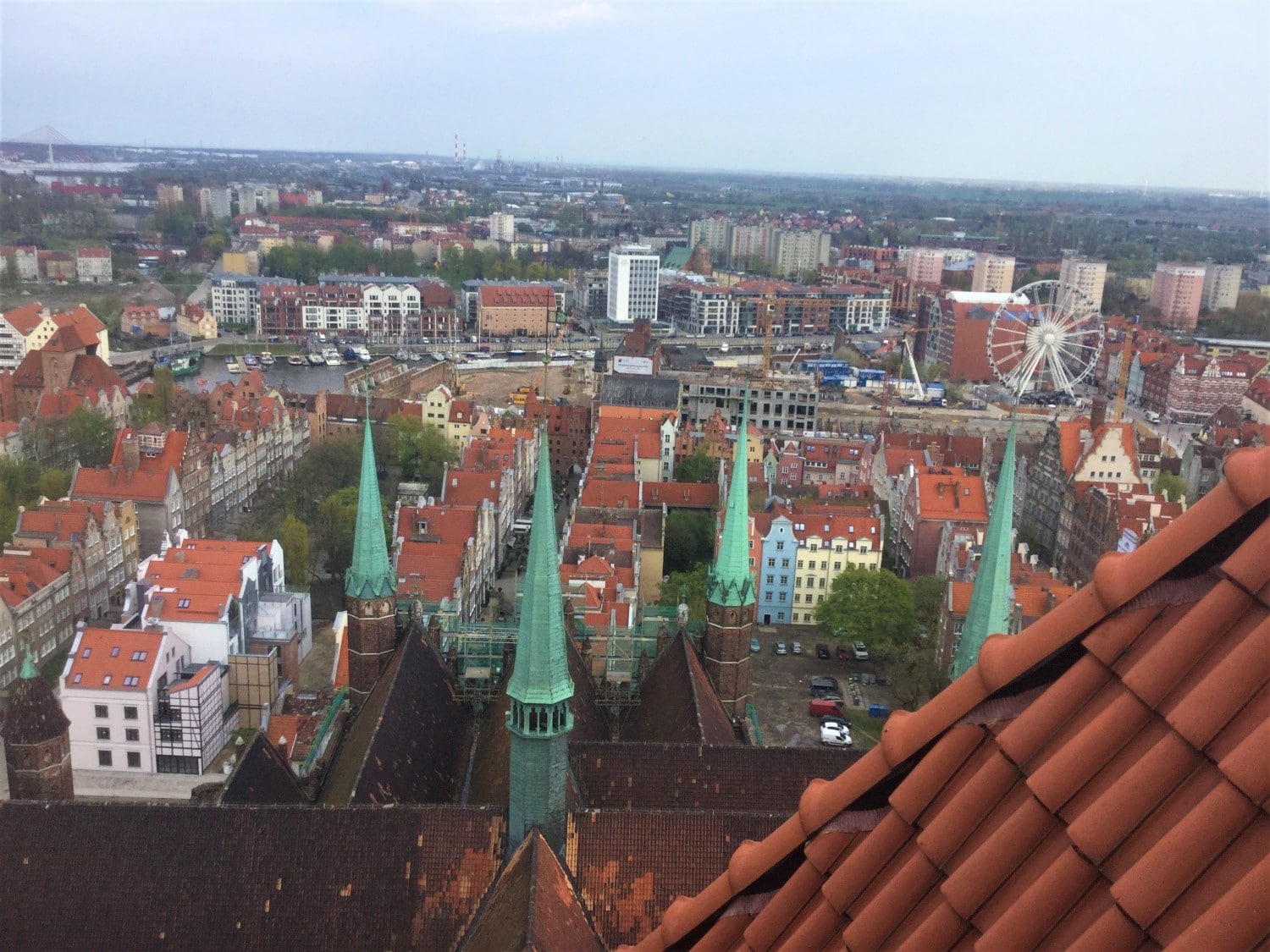Travel from Warsaw to Gdańsk
A Day of Exploring
~$60 for a day trip
(for details on expenses and logistics,
head to the end of the article!)
With winter finally coming to an end in Poland, I have begun to travel to some places that were long recommended to me by Warsaw. One of the top recommendations is Gdańsk, a seaport city in northern Poland. It is Poland’s sixth largest city and is a tourist haven in summer. I wanted to check it out before the streets flooded with tourists so I went early and spent a day exploring.
Formerly known as Danzig (German) and situated in North Poland on the Baltic Sea, the city has more than 1,000 years of history, and has been ruled by Poles, the Teutonic Order, and Germans. It was 90% destroyed during WWII (and was actually where the first battle of WWII occurred), but was rebuilt brilliantly as an exact replica of what it was prior to its destruction. It is also where the Solidarity Movement has its roots.
I purposely did not plan the sites I would see, and this (lack of) plan had strengths and weaknesses: on the one hand, having no plan meant I could go anywhere and spend any length of time in any place I chose. On the other hand, this meant that I was not able to see some places — specifically the World War II Museum and Westerplatte — that I had wanted to see, because I did not realize how far they were from the main area where I stayed.
On the day I arrived, it was threatening rain. It was already 2:00pm, and as I only had one day to experience Gdańsk, I immediately set out to see as much as I could. I didn’t need to wander far, as most of the main sites are all located in close proximity to one another.
I will tell the story of my trip to Gdańsk through some of the pictures I took while there.
I first walked down to the Moltawa River, where the Green Gate is located. Along the Moltawa River are various restaurants — all of which have verandas that extend outside, which seemed to be the case for most restaurants in Gdansk — and some small shops. While walking down the cobbled streets, surrounded by gothic-style and ornate architecture on the way to the river, I had the feeling of being in a fairytale setting — which is remarkable, considering the level of destruction Gdansk experienced during WWII.
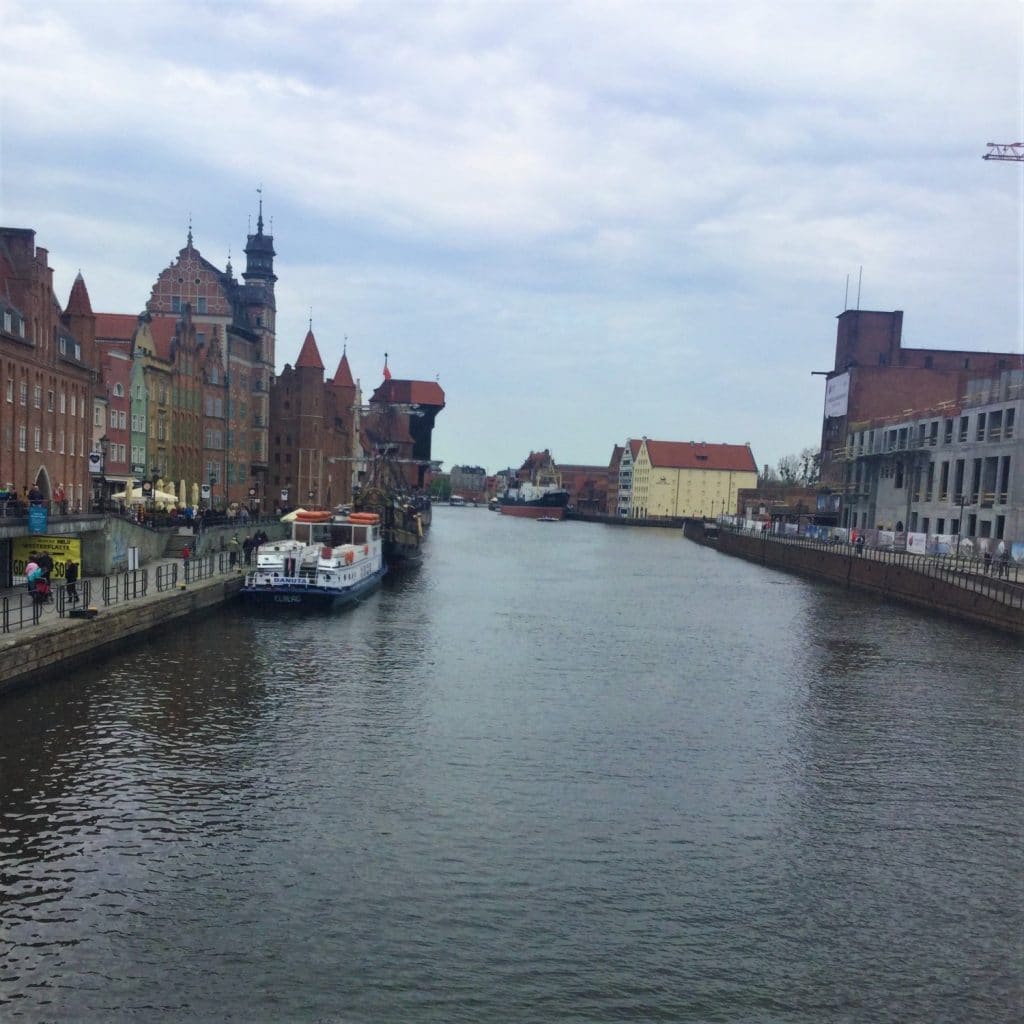
The dark half of the tallest building below is actually a crane. This crane is the icon of Gdańsk, built in the 14th century and renovated in 1442-1444. It had the combined functions of being a city gate and a port crane, capable of lifting up to 2 tons to a height of 27 meters (90 feet), and could also fit masts to ships. It was powered by men who worked huge treadmills inside.
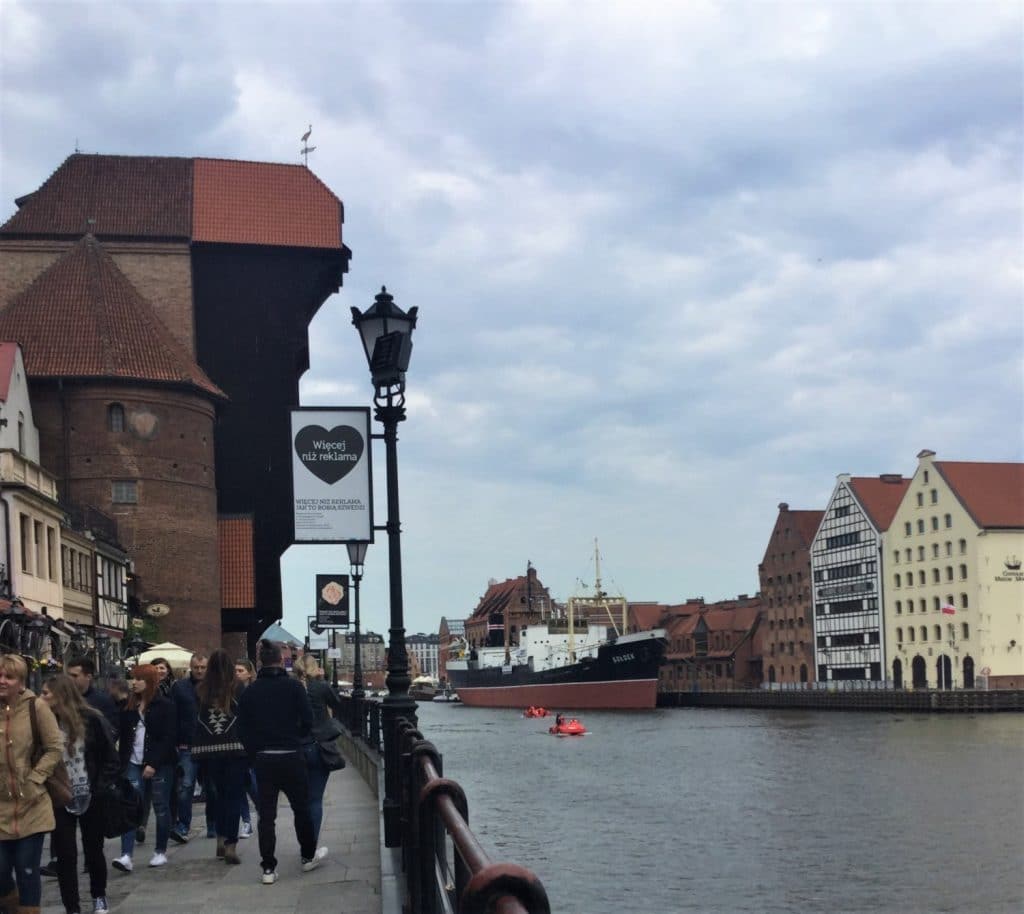
Built in the 16th century and inhabited by Polish kings, the Green Gate spans the Long Market (Polish: Długi Targ) and Long Street (Polish: Długa Ulica), which is referred to as the Royal Route. It is an excellent example of the cultural diversity embedded in Gdańsk’s history, as its architect chose to use Flemish influences in its design. The four arches are its most famous feature. It now houses a museum inside.
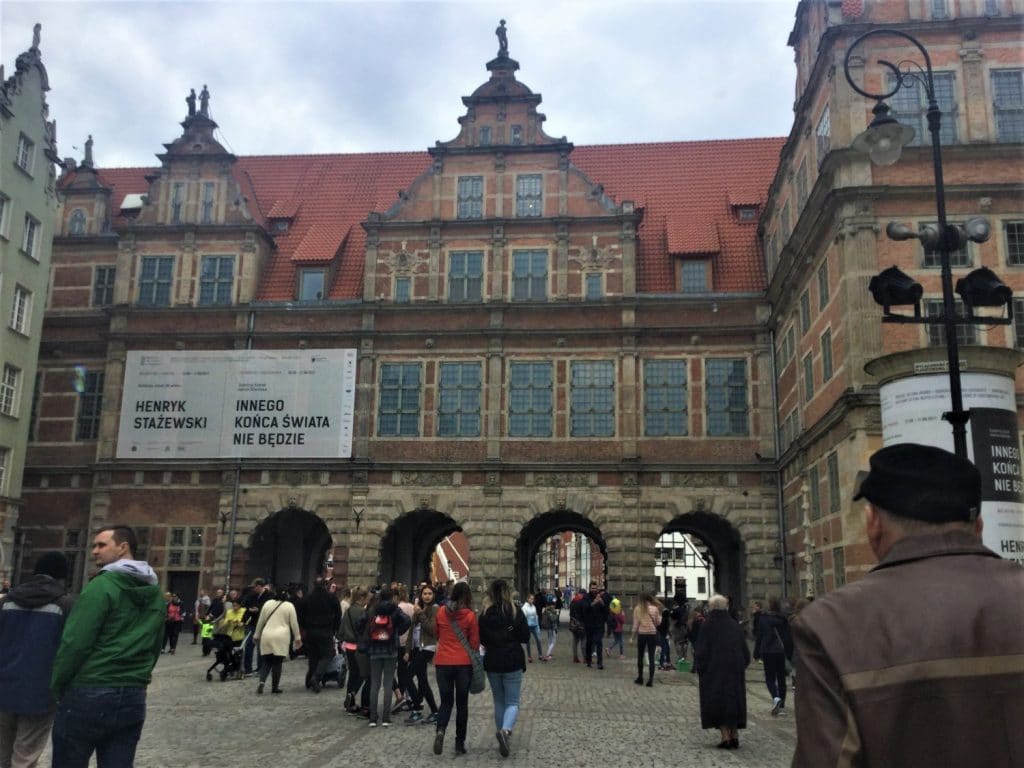
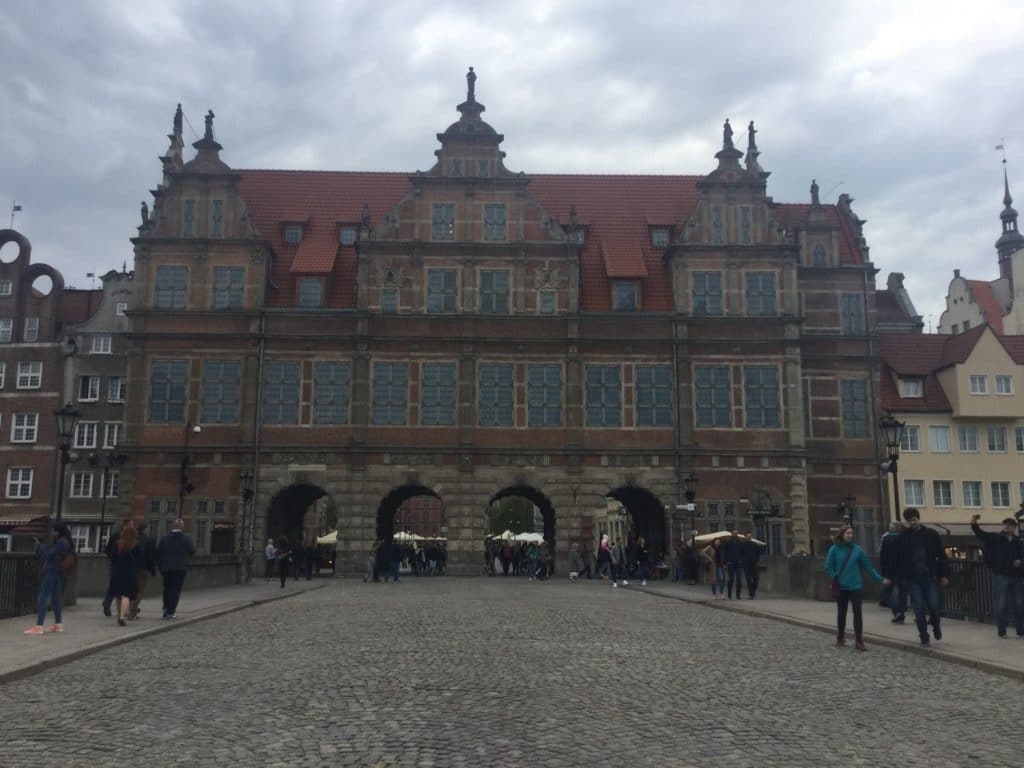
Long Road ends at the Green Gate. The road itself is cobble-stoned and lined with beautifully reconstructed buildings. This is a hot tourist spot, even in the off-season.
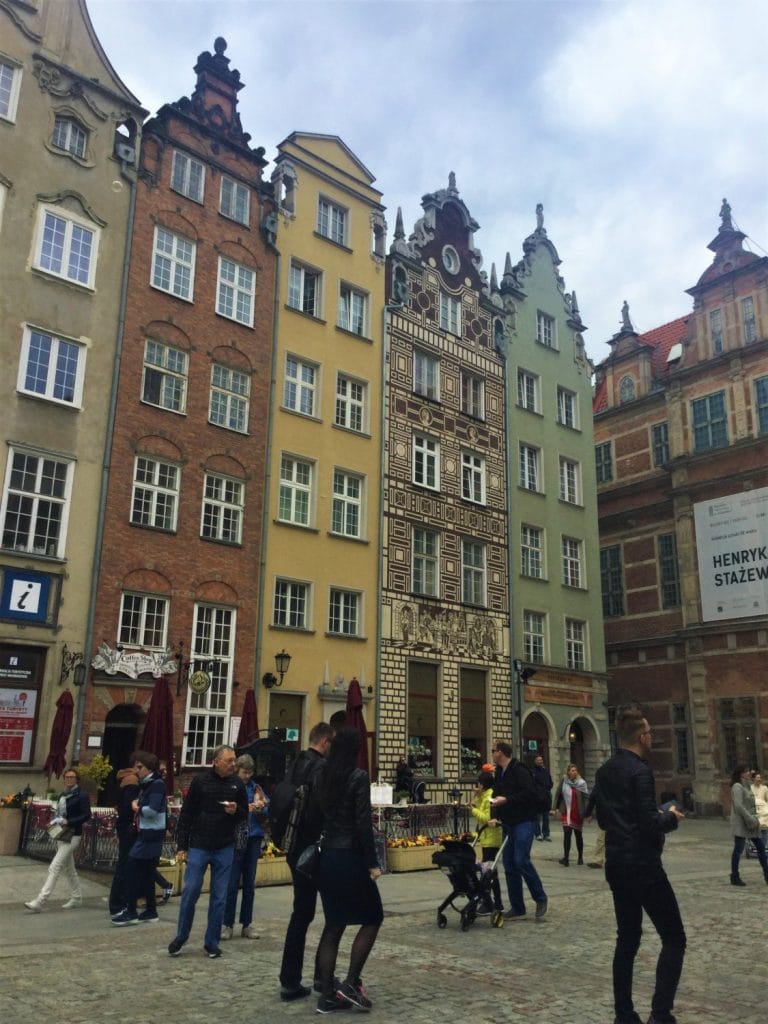
Located on Long Road, the towering spire of Main Town Hall is visible throughout most of the city. Its construction began in the early 14th century, but continued to be expanded over a long period of time until it was completed in 1488. The inside of the Main Town Hall has been turned into a museum, and there is a tower (maybe 100-150 stairs) you can climb up and get amazing views of the city below.
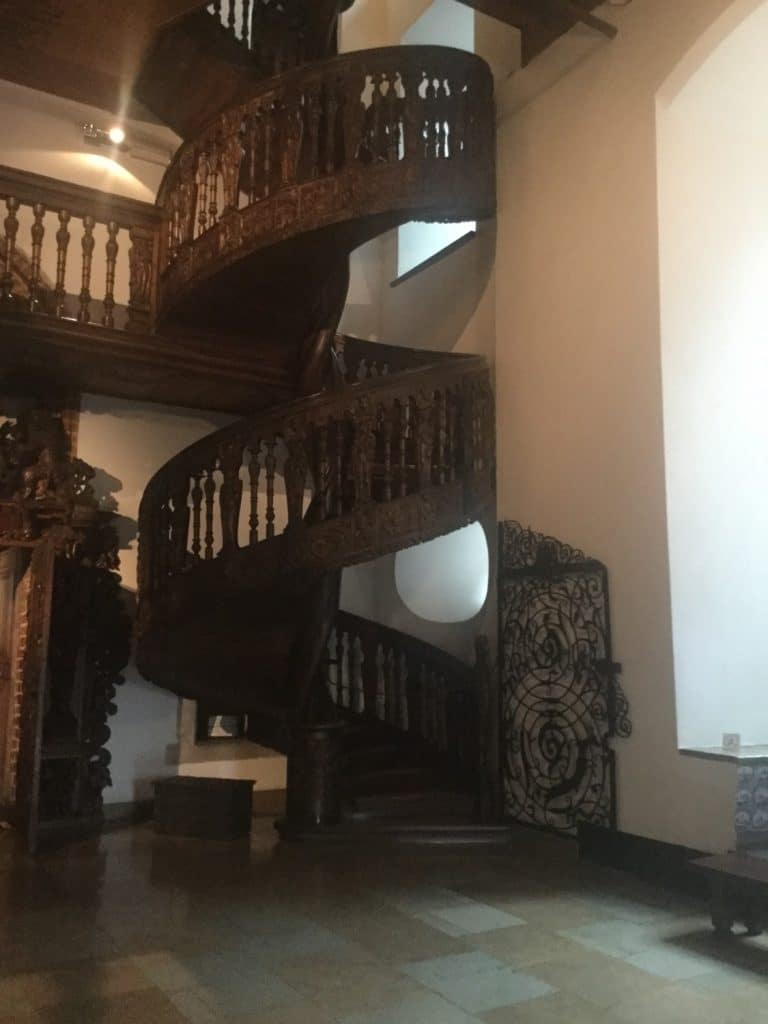
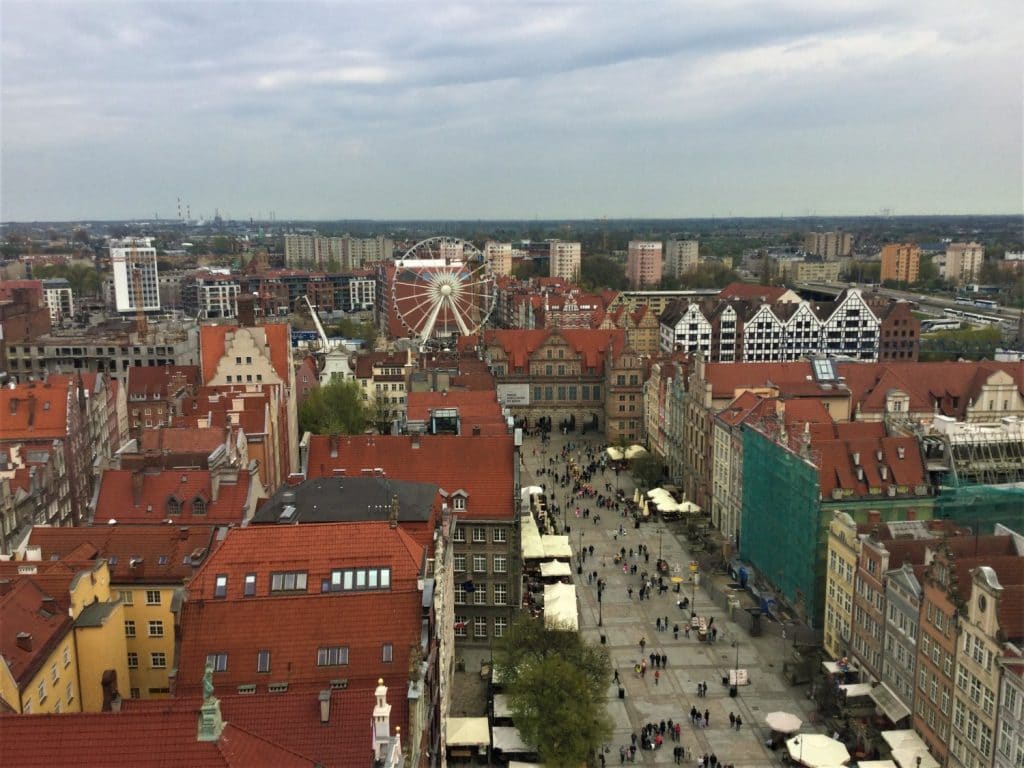
St. Mary’s is the tallest building in Gdansk and in fact is the largest brick church in the entire world. I had many difficulties trying to get a picture of the architectural marvel due to its massive size. This Roman Catholic cathedral started being constructed sometime in the 14th century, and was completed in 1496. With the Reformation, the Church saw a series of dramas including Lutheran services being predominant there throughout the 16th century until 1945.
During the war, the Church was badly damaged, its windows destroyed, all fourteen of its vaults collapsed, most of the ceiling fell in. Poles began repopulating the region while Germans fled West, and eventually the Church was given back to the Catholic diocese.
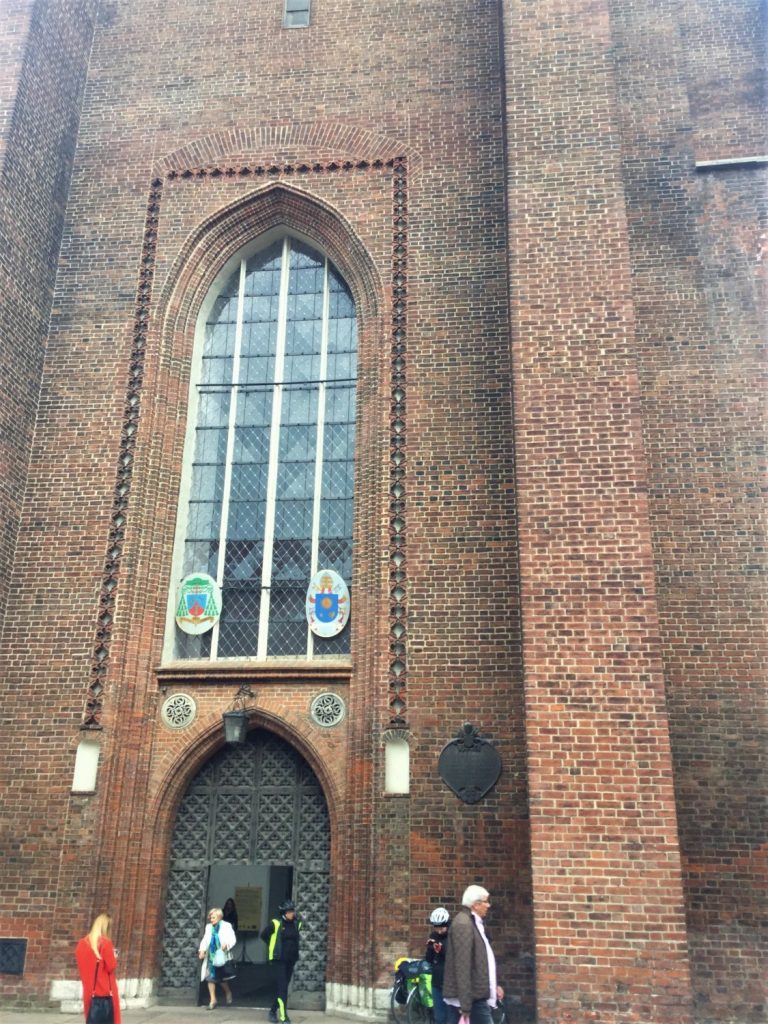

There are various rooms inside with historic exhibitions.
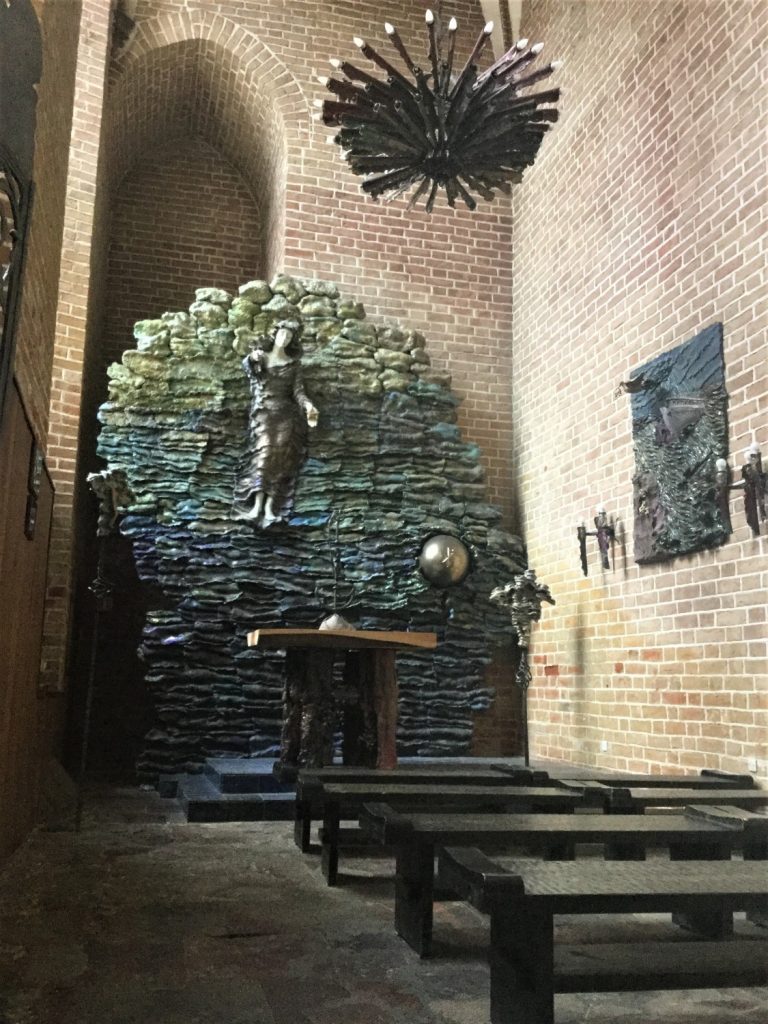
St. Mary’s also has a tower, this one with 400 stairs where you can get even better views than those from the tower of Main Town Hall. The original stairs are not used the entire way up, however; after about stair number 300, you walk through a passageway to modern stairs, and finish the climb from there. While in the passageway, you can see the tops of the interior roofs (alas, it was so dark in there none of my photos of the roofs turned out well). The views from the top of St. Mary’s are stunning.
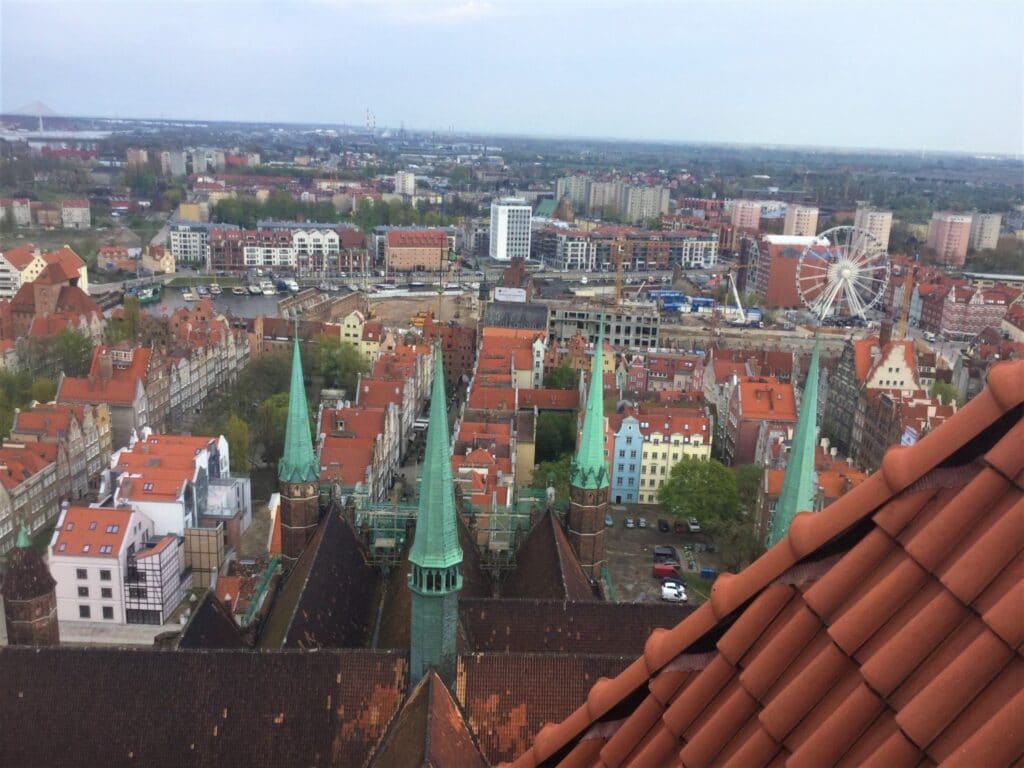
In front of St. Mary’s stands the Royal Chapel built in 1681 by the order of King John III Sobieski. In 1945, its interior was burned down and walls torn down. The 19th century frescos under the cupola were the only elements to survive the damage. Its restoration began in 1946 but was only finished in 1995.
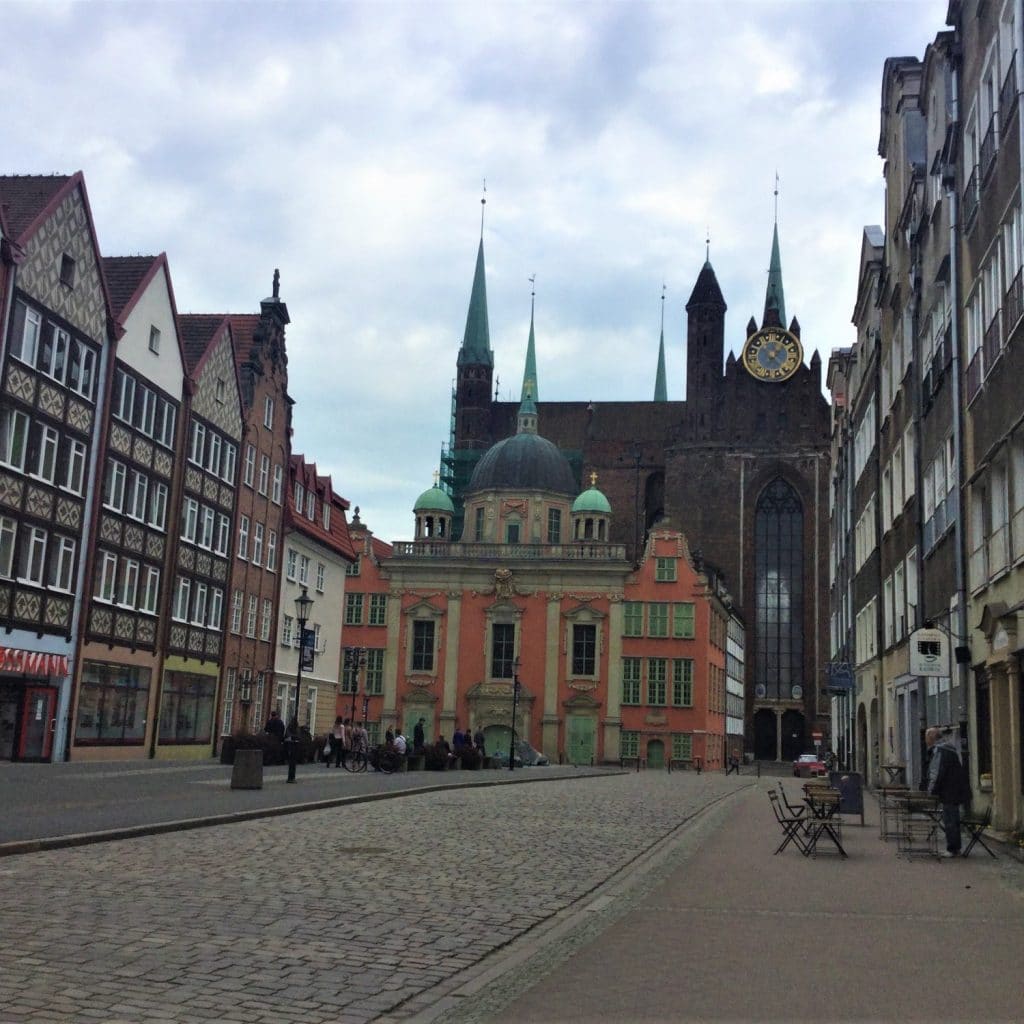
The Grand Arsenal, or Great Armory, is a 17th century architectural erection. It was originally a weapons store and also included armor, harnesses, and works of art until the end of the 18th century. It was demilitarized in the 1920s and a trade hall was opened on the ground floor. It burned down during WWII, but was meticulously rebuilt and richly decorated with the same red brick-and-sandstone facade and gold ornaments that give the impression of the Arsenal being comprised of four minor buildings. In 2007, the ground floor was converted to a shopping mall and the upper floor was given to the Academy of Fine Arts.
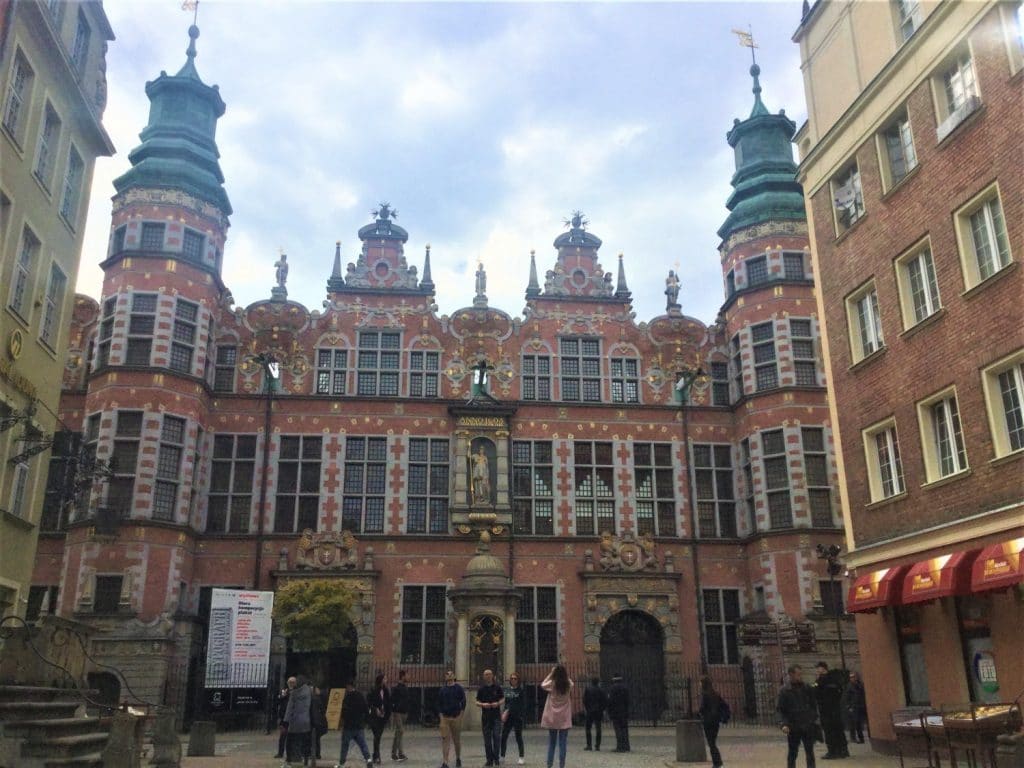
My camera refused to take one single decent picture of Ulica Mariacka, but due to it attracting so many artists and tourists from all over the world, it should definitely be mentioned. Ulica Mariacka is also known as St. Mary’s Street, and is a very small street. It has many eateries and small museums. The street was also destroyed during WWII but reconstructed after.
The Milk Can Gate (Stągwie Mleczne) consists of two defensive towers, which, due to their shape, were called milk cans (but I could not get a decent shot of both the milk cans, only one, as you can see in the photo; but you can see the gate between them). It was built in the early 14th Century as part of the fortifications of Spichrzów (Granary) Island. The only decorations of the gate are two Polish coats of arms (Royal Prussia and Gdansk).
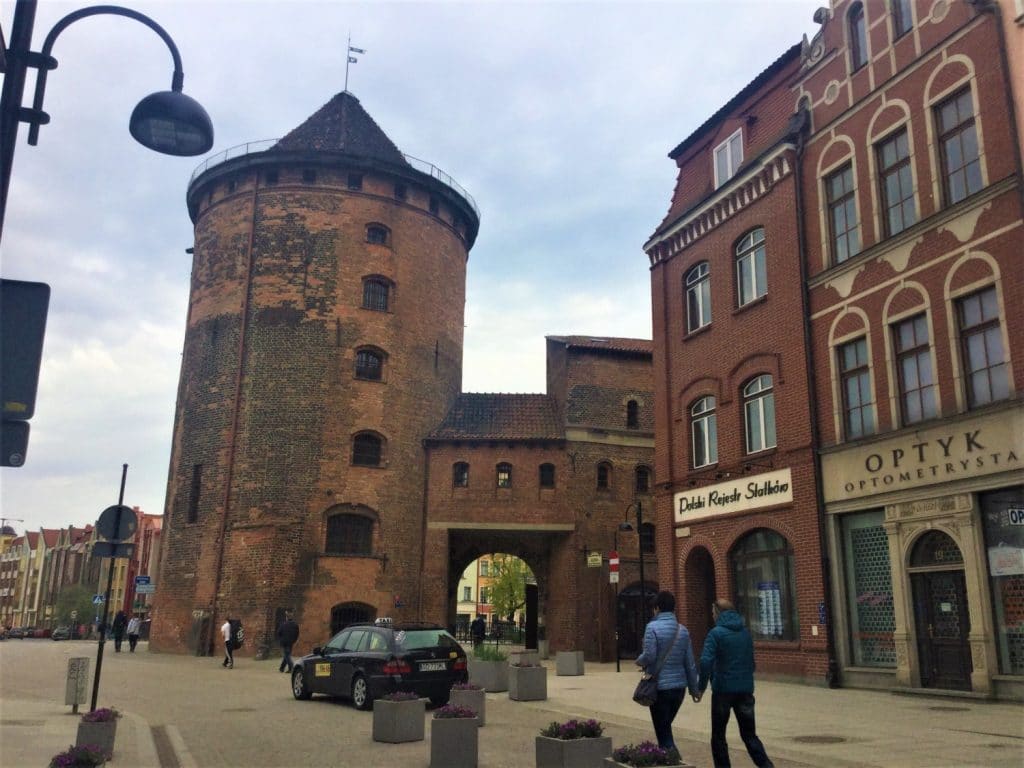
Hala Targowa was built in 1896 in a neo-gothic style. However, when recently renovating the market, the foundations of a 12th century church were found underneath, which have been preserved as found, making this place an archaeological excavation, museum, and shopping center. From what I noticed, most of the shops inside were clothing stalls or had meat and dairy products. I was more amazed by the fact that amid these shops are numerous archaeological excavations, and thus did not buy anything or look at any prices. You can also visit the Romanesque Cellars from the courtyard outside.
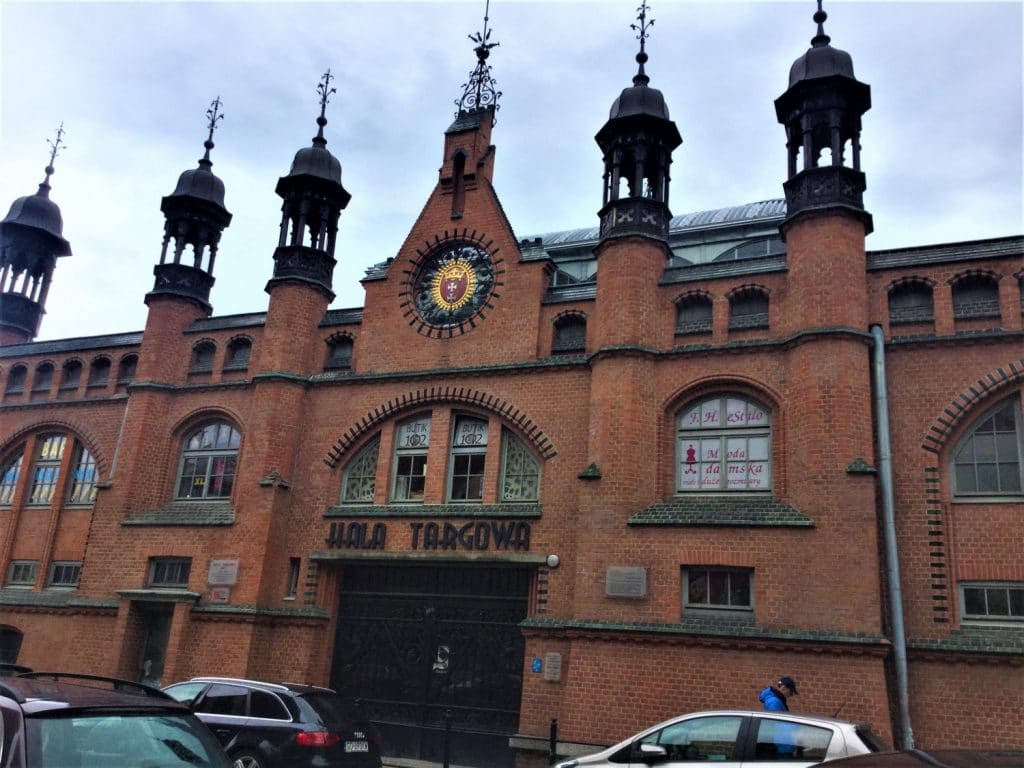
To get to Gdańsk from Warsaw, you can take the PKP train for 120 PLN roundtrip (or 60 PLN for students — 15 to 30 USD), or you can take PolskiBus (which I took) roundtrip for 70 PLN (35 if you are a student — 9 to 18 USD). If taking PolskiBus, you must get on the bus at the Młociny metro station, and you must buy your ticket either at the station or online from their website prior to departure. You can either print off your ticket or receive a digital ticket sent to your smartphone via SMS. The Gdańsk station is located right in the middle of Gdańsk, so it is very easy to find where you are going from there. My hostel cost me 25 PLN for one night (about 7 USD), in addition to giving a 20 PLN (about 5 USD) key deposit (which you get back when you give the keys back before leaving). If you plan on going to a nice dinner, plan on adding an extra 60 PLN (15 USD) to the trip (I only had an Istanbul kebab, which was less than 10 PLN). All in all, a day trip to Gdańsk from Warsaw should cost no more than 200-250 PLN (50 – 65 USD).

